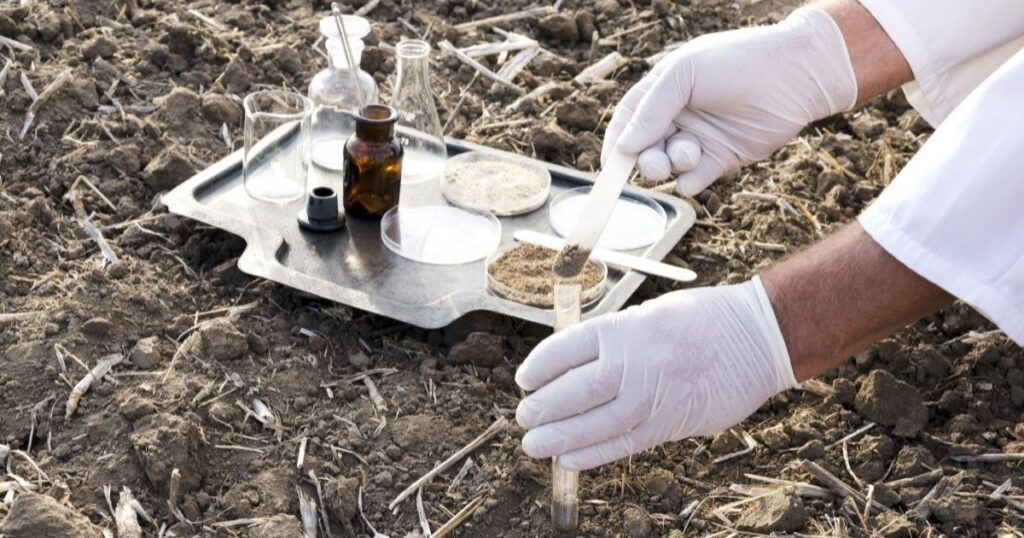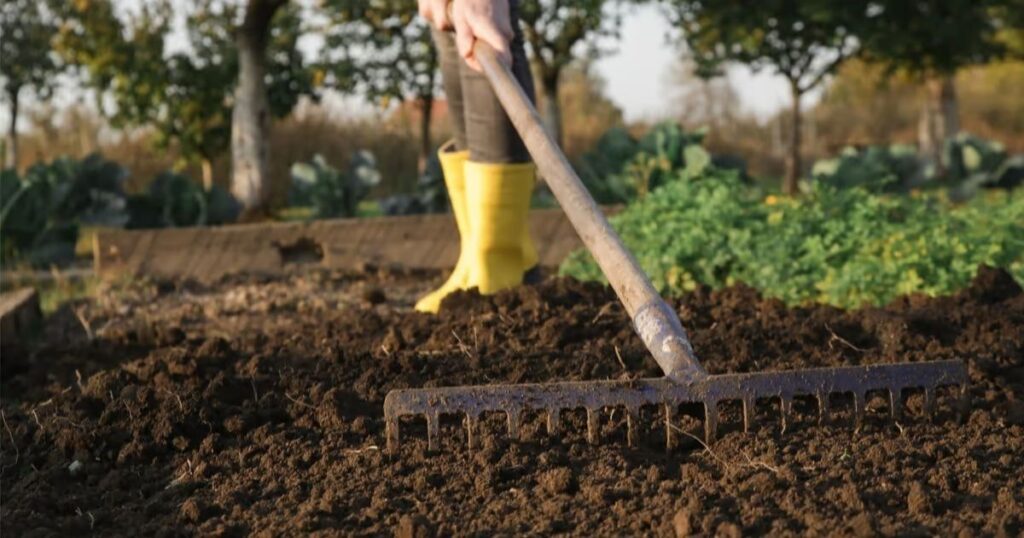Types of Garden Soil You Can Dispose of
Proper disposal of garden soil is crucial for maintaining a healthy and sustainable environment. Before we delve into the various methods of soil disposal, it’s essential to understand the different types of soil you may encounter.
Topsoil
Topsoil, the dark, crumbly layer located in the top 300mm of the ground, is considered the most valuable soil type. It is rich in organic matter and beneficial soil organisms, making it an excellent choice for gardening and landscaping projects. Topsoil is often in high demand, and disposing of it responsibly can be relatively straightforward, as many gardeners or landscapers may be willing to take it off your hands.
Subsoil
Subsoil, on the other hand, is found at depths of 300mm or more and consists primarily of clay or chalk. Unlike topsoil, subsoil is less desirable for gardening purposes due to its poor drainage and nutrient content. As a result, disposing of subsoil can be more challenging, as there is often less demand for it.
Also read this post:Garden Weeds
Ways to Dispose of Soil

Now that we’ve covered the different types of soil, let’s explore the various methods of disposing of soil waste safely and legally.
1. Hire a Skip
One of the most convenient options for disposing of soil waste is to hire a skip. These large, open-top containers can be placed on your driveway or another accessible area, allowing you to easily load the soil into them. Once full, the skip hire company will collect and dispose of the soil at a licensed facility, ensuring proper waste management.
Hiring a skip is an excellent choice when you have a significant amount of soil to dispose of, as it eliminates the need for multiple trips to a disposal site. However, it’s crucial to ensure that the skip hire company you choose has the necessary licenses and permits to handle soil disposal legally.
2. Use an External Service

If you prefer a more hands-off approach, you can opt to hire a professional site and land clearance company to handle the soil disposal process for you. These companies are equipped with the necessary equipment and expertise to remove and transport soil waste safely and efficiently.
When hiring an external service, ensure that the company holds the required licenses and permits for soil disposal. Additionally, inquire about their disposal methods and facilities to ensure they follow sustainable and environmentally responsible practices.
3. Use it for Personal DIY Projects
If you have a smaller amount of soil to dispose of, consider repurposing it for personal DIY projects around your home or garden. Topsoil, in particular, can be an invaluable resource for various projects, such as creating raised garden beds, leveling uneven ground, or enriching your existing soil.
By reusing the soil, you not only eliminate the need for disposal but also reduce your environmental impact and potentially save money on purchasing new soil. However, it’s essential to maintain the quality of the soil and ensure it is free from contaminants before using it for gardening or landscaping purposes.
4. Advertise it to Your Local Community
If you have a significant amount of soil that you cannot repurpose or dispose of yourself, consider advertising it to your local community. Many gardeners, landscapers, or individuals working on DIY projects may be interested in obtaining soil for their projects.
You can advertise your available soil through various channels, such as social media groups, community forums, or dedicated soil-sharing websites. Be sure to provide detailed information about the type of soil, quantity, and any relevant details to help potential recipients make an informed decision.
How to Dispose of Garden Soil – An Overview

Disposing of garden soil responsibly is not only a legal requirement but also an essential step in promoting sustainability and protecting the environment. By following the methods outlined in this guide, you can ensure that your soil waste is handled safely and efficiently.
Whether you choose to hire a skip, engage an external service, repurpose the soil for personal projects, or advertise it to your local community, it’s crucial to prioritize eco-friendly and sustainable practices. Additionally, familiarize yourself with local regulations and guidelines to ensure compliance with soil disposal laws.
Remember, proper soil disposal is a collective responsibility, and by taking the necessary steps, we can contribute to a healthier and more sustainable environment for generations to come.
1. Soil disposal regulations: When disposing of soil waste, it’s essential to comply with local and national regulations to ensure legal and environmentally responsible practices. These regulations may vary depending on the type and quantity of soil, as well as potential contaminants. Familiarize yourself with the relevant laws and guidelines to avoid potential fines or penalties.
2. Eco-friendly soil disposal methods: In addition to traditional disposal methods, there are various eco-friendly approaches to consider. Composting, for instance, is an excellent way to repurpose organic soil waste and create a nutrient-rich soil amendment for your garden. Other sustainable options include using soil for landscaping projects or donating it to community gardens or farms.
3. Landfill options for soil: While not the most environmentally friendly option, landfills may be a suitable disposal method for certain types of soil waste, particularly if it is contaminated or unsuitable for reuse. However, it’s crucial to ensure that the landfill is licensed and equipped to handle soil disposal properly.
4. Soil recycling techniques: Soil recycling involves processing and treating soil waste to remove contaminants and create a usable product. This approach not only reduces waste but also provides a valuable resource for construction, landscaping, or agricultural projects.
5. Composting soil at home: For small quantities of organic soil waste, composting at home can be an excellent option. By creating a dedicated compost bin or pile, you can transform your soil waste into nutrient-rich compost for your garden, reducing waste and promoting sustainability.
6. Hazardous soil disposal guidelines: Certain types of soil waste may be considered hazardous due to the presence of contaminants or pollutants. In such cases, specific guidelines and regulations must be followed to ensure safe and proper disposal, often involving specialized facilities or treatment methods.
7. Soil disposal facilities near me: When hiring an external service or seeking a disposal facility, it’s essential to research and locate licensed and reputable soil disposal facilities in your area. This can help minimize transportation costs and ensure compliance with local regulations.
8. Sustainable soil disposal practices: Adopting sustainable soil disposal practices not only benefits the environment but can also lead to long-term cost savings and resource conservation. Explore options such as soil reuse, composting, or recycling to minimize waste and promote a circular economy.
9. Disposing of contaminated soil safely: If your soil waste is contaminated with hazardous substances, such as heavy metals, pesticides, or petroleum products, it requires special handling and disposal methods to prevent environmental pollution and potential health risks. Seek professional guidance and follow proper protocols for safe disposal.
10. Soil disposal cost analysis: The cost of soil disposal can vary depending on the method chosen, the quantity of soil, and the presence of any contaminants. Consider conducting a cost analysis to determine the most economical and practical option while ensuring compliance with regulations and environmental responsibility.
By incorporating these LSI keywords and following the outlined structure, this comprehensive article on how to dispose of soil will provide valuable insights and actionable steps for individuals and businesses seeking to responsibly manage their soil waste. Remember to tailor the content to your target audience and ensure compliance with local regulations and best practices.
FAQs:
How to get rid of soil waste?
One way to get rid of soil waste is to hire a skip bin service to collect and properly dispose of the soil at a licensed facility. Alternatively, you can look into donating or advertising the soil to local gardeners, landscapers, or community gardens who may be able to reuse it.
What is the cheapest way to get rid of soil?
The cheapest way to get rid of soil is often to repurpose it yourself for projects like raised garden beds, compost, or leveling the ground around your property. If that’s not feasible, advertising the free soil on community listings or amongst neighbors is usually cheaper than skip bin hire.
How do I dispose of dirt near me?
To dispose of dirt near you, research local waste management facilities that accept soil and inquire about their requirements and any fees. You can also check if your municipal waste service offers curbside collection for limited quantities of soil or gardening waste.
What is soil disposal?
Soil disposal refers to the process of properly removing and managing unwanted soil waste in an environmentally responsible manner, following applicable regulations. This could involve transporting soil to approved landfills, and treatment facilities, or finding beneficial reuse options.











